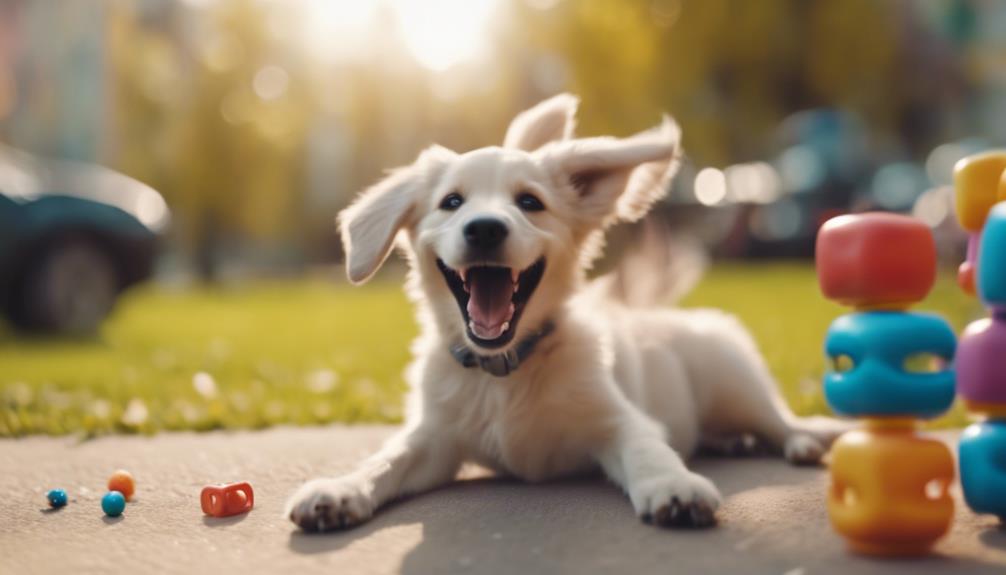Training a puppy can be a rewarding yet challenging endeavor, particularly for those new to dog ownership. Establishing a foundation with essential commands is crucial for clear communication and developing a trusting relationship with your pup. Employing positive reinforcement techniques can significantly enhance the learning experience, but consistency and patience are paramount. Additionally, understanding your pup's unique behavior and socialization needs will play a vital role in their overall development. As we explore these aspects further, consider how they can transform your training approach and lead to a more harmonious relationship with your canine companion.
Understanding Corgi Behavior

Corgis are known for their unique blend of intelligence, playfulness, and strong herding instincts, which significantly influence their behavior and training needs. Understanding corgi quirks is essential for effective training. These dogs often display stubbornness, a trait linked to their independent nature. Additionally, their herding background leads them to chase smaller animals, which can affect their interactions with pets and people.
Key breed characteristics include:
- High Energy: Corgis require regular exercise to remain happy.
- Social Nature: They thrive on companionship and may become anxious when left alone.
Recognizing these aspects can enhance your training approach and foster a well-adjusted pet.
Essential Training Commands
Mastering essential training commands is fundamental in establishing effective communication and a harmonious relationship between you and your pup.
Here are four key commands to teach:
- Sit Command: This is often the first command to teach. It encourages your pup to sit down, promoting calmness.
- Stay Command: This command helps your dog learn patience, allowing them to stay in one place until released.
- Come Command: Teaching this command ensures your pup returns to you when called, enhancing safety.
- Down Command: This command helps to place your dog in a submissive position, which can be useful in various situations.
Positive Reinforcement Techniques

Building on the foundation established by essential training commands, positive reinforcement techniques serve as a powerful method to encourage desirable behaviors in your pup. These methods involve rewarding your dog for good behavior, which helps strengthen their understanding of what is expected.
One popular approach is clicker training, where a distinct sound marks the moment your dog performs the desired action, followed by a reward. This clear communication reinforces learning effectively.
Additionally, implementing reward systems, such as treats, toys, or praise, can motivate your pup to repeat good behaviors. Consistency is key; always reward immediately after the desired behavior.
Socialization Strategies
Effective socialization strategies are essential for helping your puppy develop into a well-adjusted and confident adult dog. Socialization should begin early and can be tailored to your puppy's needs. Here are four effective strategies:
- Puppy Playdates: Organize playdates with other vaccinated puppies to promote social interaction.
- Exposure to Various Environments: Gradually introduce your puppy to different places, sounds, and situations to build their confidence.
- Breed Specific Socialization: Research breed tendencies and focus on socializing in ways that address their unique characteristics.
- Positive Reinforcement: Use treats and praise to encourage your puppy's positive interactions with people and other animals.
Implementing these strategies will help your puppy grow into a well-socialized dog, ready to face the world with confidence.
Common Training Challenges

Training a puppy can often present several common challenges that require patience and consistency from the owner.
One frequent issue is leash pulling, where the pup tugs excessively on the leash during walks. This behavior can be managed through positive reinforcement techniques, encouraging your dog to walk beside you.
Another common challenge involves barking issues. Puppies may bark excessively due to excitement, anxiety, or boredom. Addressing this requires identifying the trigger and providing appropriate distractions or training commands to redirect their focus.
Consistent practice and clear communication are essential in overcoming these challenges.
Remember to celebrate small victories along the way, as building a strong bond with your puppy will ultimately lead to better behavior and a more enjoyable training experience.

